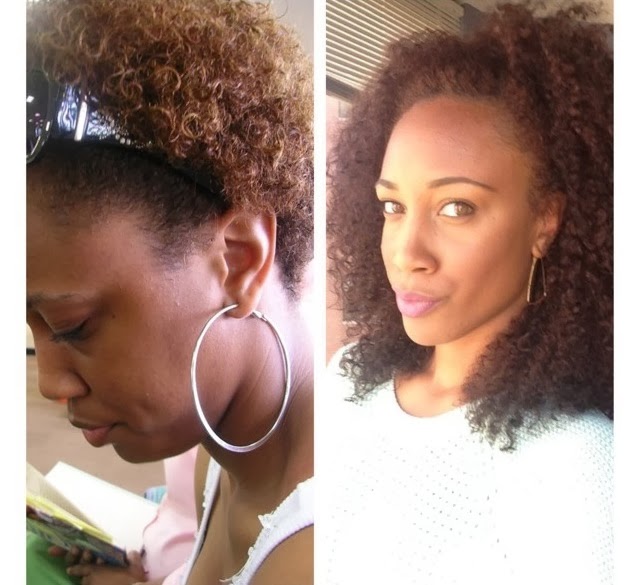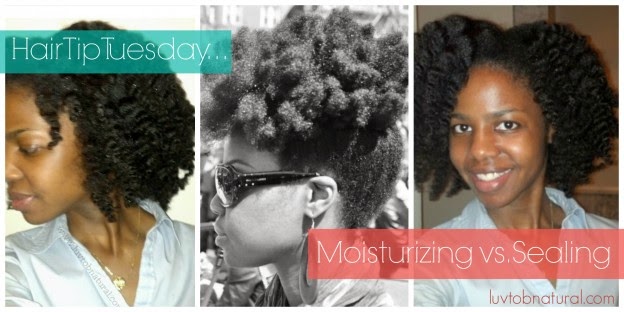A good leave-in conditioner is said to “help detangle strands, reduce fly-aways, tame frizz, and keep your curls soft and smooth” (Smith & Searle, “8 Best Leave-in Conditions for Hair”). However, many of us know that leave-in conditioners are a superstar product for additional moisture and frizz prevention. Despite this, few of us know exactly what types of leave-in conditioners are best for our hair and what it needs at that moment. Knowing this, can substantially increase the health of your hair and enable you to reach your hair goals faster.
Read On!>>>
While all texturized women face similar challenges, there are also differences amongst them. For example, my hair makes no sense whatsoever. It’s coarse and dry but my strands are fine so it doesn’t appreciate products that are too heavy. My hair stays happiest with water-based leave-ins that are extremely hydrating. Audrey Davis-Sivasothy, the author of The Science of Black Hair states that “creamy leave-ins are best for those with thick, coarse hair while sprays often suffice for those with fine-hair who cannot use heavier water-based moisturizers” (80).
Additionally, it is vital that we focus on obtaining a moisture-protein balance. Some people are protein advocates while others are protein-sensitive and avoid it at all cost. I learned early in my natural haircare journey that my hair was low porosity and fine which was like trying to find the similarities between apples and oranges. The cuticles of my hair were tightly closed which made my strands stubborn towards receiving moisture yet my strands were somewhat strong. I didn’t have to worry about heat or color damage as much as the next person.
On the other hand, I did have to worry about breakage because of my dry and fine strands. I realized that getting moisture into my strands on wash day was vital and that a protein treatment once a month or every other month worked best for me. For naturals that are protein sensitive then make sure you stick with leave-ins that contain hydrolyzed soy protein. Shea Moisture’s Curl Enhancing Smoothie is a great leave-in, being moisturizing, lightweight, and, protein-sensitive friendly.
In contrast, women with high porosity hair face challenges too. With high porosity hair, the cuticle is raised or open. This means that the cuticles receive moisture well but do not hold onto that moisture well due to the holes or gaps in the strand. These ladies do well with leave-ins that have cuticle-sealing ingredients, such as Aloe Vera. A good leave-in purchase for high-porosity ladies is Camille Rose’s Curl Love, Moisture Milk. It contains aloe leaf juice as well as a list of other milks, oils, and butters.
Okay, so let’s recap what we just discussed because I know it seems like there are so many details but no clear-cut, defined rules of thumb. According to Audrey Davis-Sivasothy, coarse hair needs heavier products i.e. milk, oils, butters. Fine hair appreciates mists, sprays, and lighter conditioning products which have a watery concentration. Does the leave-in feel watery and cool to the touch or is it heavy and pasty? If it’s wet feeling then you have a leave-in that is GENERALLY good for fine hair. If the product is heavy then you have a leave-in that is GENERALLY good for thick hair.
Now, this is the part where you may have lost me. If your hair is coarse but seems not to receive moisture easily (low porosity strands) then you want leave-ins that are light but very hydrating. You need watery leave-ins that have a lot of moisturizing ingredients. Glycerin is great for the summertime but during the winter it should be avoided because it draws moisture out of the hair. During the wintertime, leave-ins with ingredients like shea butter and jojoba oil are good options.
If you have hair that is fine but loses moisture as easily as it receives it (high porosity) then you need to find products that are heavy and hydrating. Your leave-ins will have water as the main ingredient too but be thicker in consistency. As stated previously, you want to close your cuticle to allow the ingredients to stay on your strand for longer. Leave-ins with Aloe Vera juice, and oils like avocado are a great option for you ladies year-round. You should also be protein advocates. Protein assists your hair, by “temporarily [filling] those holes, thereby strengthening the hair” (Gadling, “Curl Talk: 10 Products That Help Maintain High Porosity Curls”).
In conclusion, you must perform trial runs with your hair. When you become natural, think of yourself as the investigator or detective. The tips above should be a great start but don’t rely on them solely. Take the time to really figure out which leave-in’s work for your hair. Leave-ins became an overnight game changer for me. If you take the time to figure out which ones work well, your natural hair will thank you.
Sources
Smith, Erica, and Kelly Searle. "8 Best Leave-in Conditioners for Hair." TotalBeauty. TotallyHer Media, LLC, 2015. Web. 23 Aug. 2015.
Sivasothy, Audrey. "Protein & Moisture Balancing Strategies for Breakage Correction and Defense." The Science of Black Hair: A Comprehensive Guide to Textured Hair Care. Saja, 2011. 80. Print.
Gadling, Adrienne. "10 Products That Help Maintain High Porosity Curls." StyleBlazer. Moguldom Media Group, 1 Aug. 2014. Web. 23 Aug. 2015
What is your favorite leave-in and why?!
















































